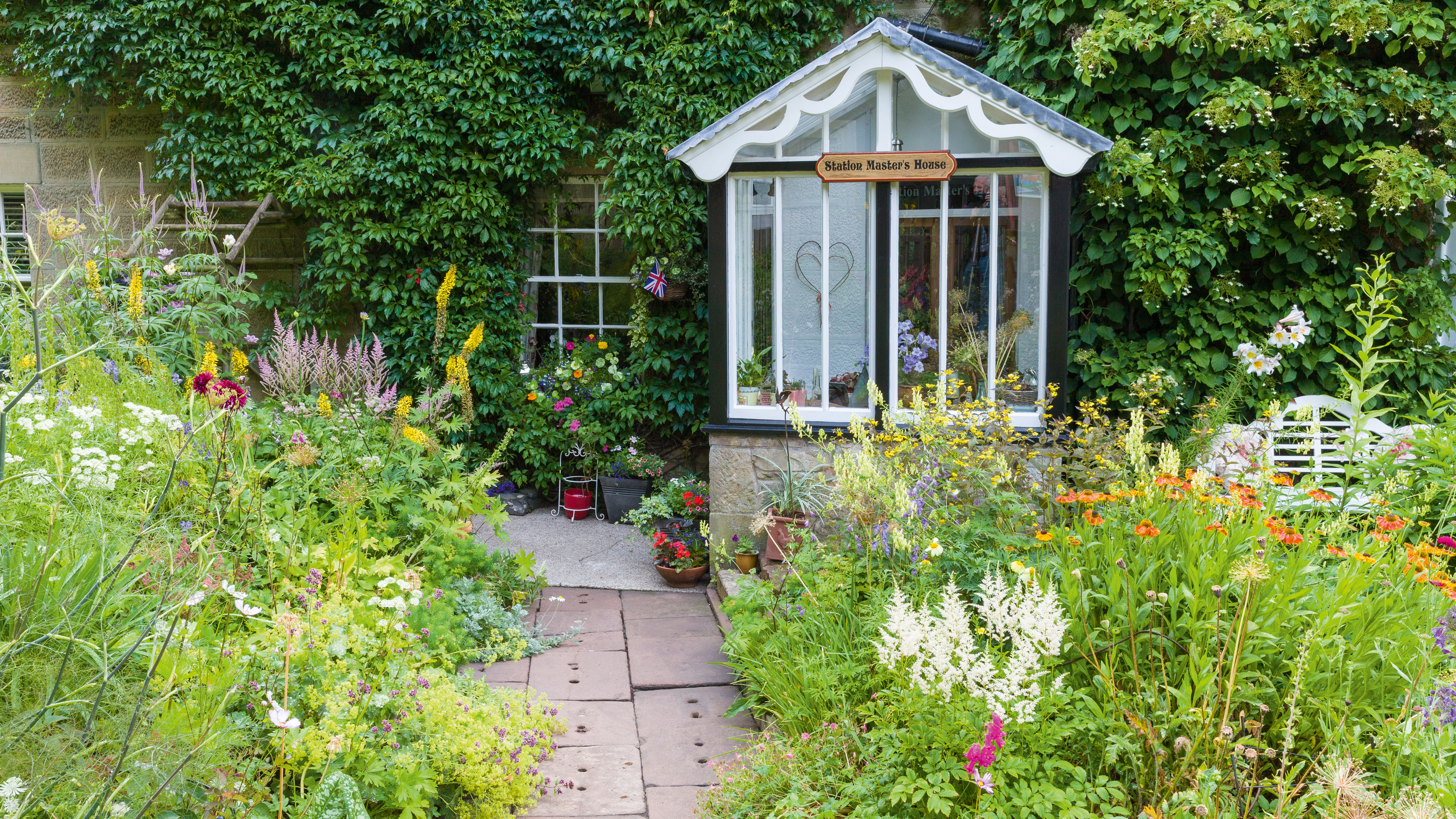
Jude and Mat Jansen are used to people peering over the garden fence to admire their colourful cottage garden. They have even welcomed a few curious passers-by who have mistakenly wandered through the garden gate for a better look.
It's no surprise though, as their beautiful displays of fluffy astilbe, hostas, sweet-smelling roses and purple masses of lavender, peppered with helenium and phlox, are a sight to behold.
In fact, their garden is so full of flowers that some spill onto the railway platform next to their home – the Grade II-listed former stationmaster’s house in the pretty Cumbrian village of Wetheral.
Read on to find out how they created their beautiful garden. Then find more real garden and home transformations or advice on creating your own cottage garden.

Pink sidalcea, astilbe, astrantia, salvia, delphiniums and anemones are among the mix of cottage garden plants
For rail passengers, the Jansens’ garden is a real visual treat as they cross the railway line via a Victorian footbridge. From the elevated view they can take in all of Jude and Mat’s glorious creation, including its neat terraced vegetable plots and flower beds bursting with vivid hues.
Yet the garden has only really taken shape in the past nine years, since Jude retired and developed a passion for gardening and the outdoors. ‘When we bought the house, the land around it was just one continuous slope of grass and very overgrown,’ she says. ‘There were a lot of outbuildings and an old greenhouse; it all looked very neglected.’
Find more cottage garden design ideas.
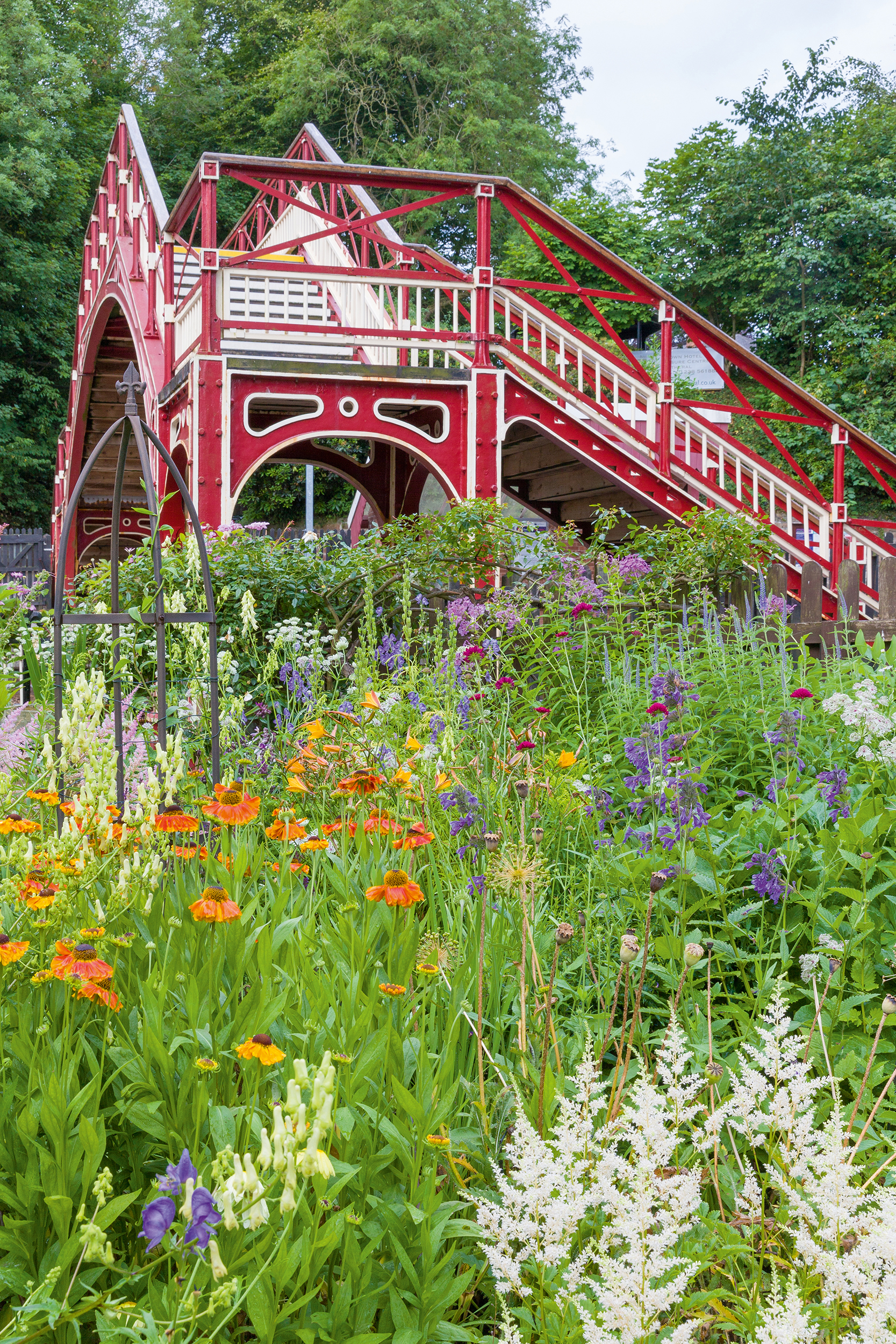
Jude and Mat regularly clean the beautiful cast-iron footbridge, which forms a colourful frame to phlox, a rambling rose, astilbe and Helenium 'Sahin's Early Flowerer'
To create some kind of focus to the large garden, Jude and Mat employed a young stonemason to demolish the outbuildings and use the reclaimed stone to turn the slope into a series of terraces for growing soft fruits and vegetables. The remaining rubble became the hardcore for a series of patios.
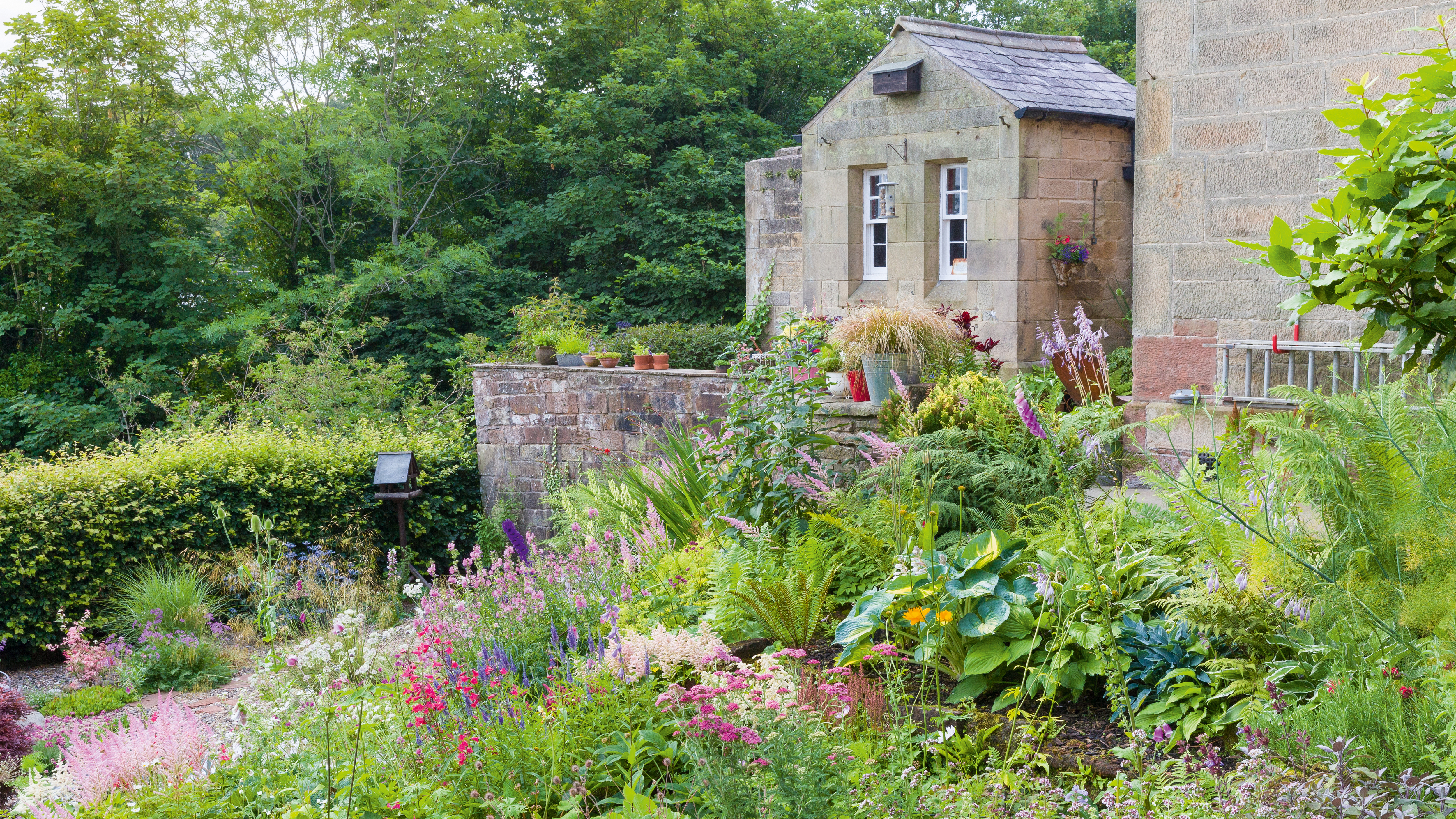
A beautiful flower border at the edge of one of the patios is filled with hostas, ferns and buddleias. The wall was built with stone reclaimed from demolished outbuildings
The next phase was to demolish a station toilet block and waiting room to the side of the house and turn it into a walled garden, using the original room layout to define the position of raised beds, a barbecue and a dining area. ‘We tried to reuse everything that was already on site,’ says Mat.
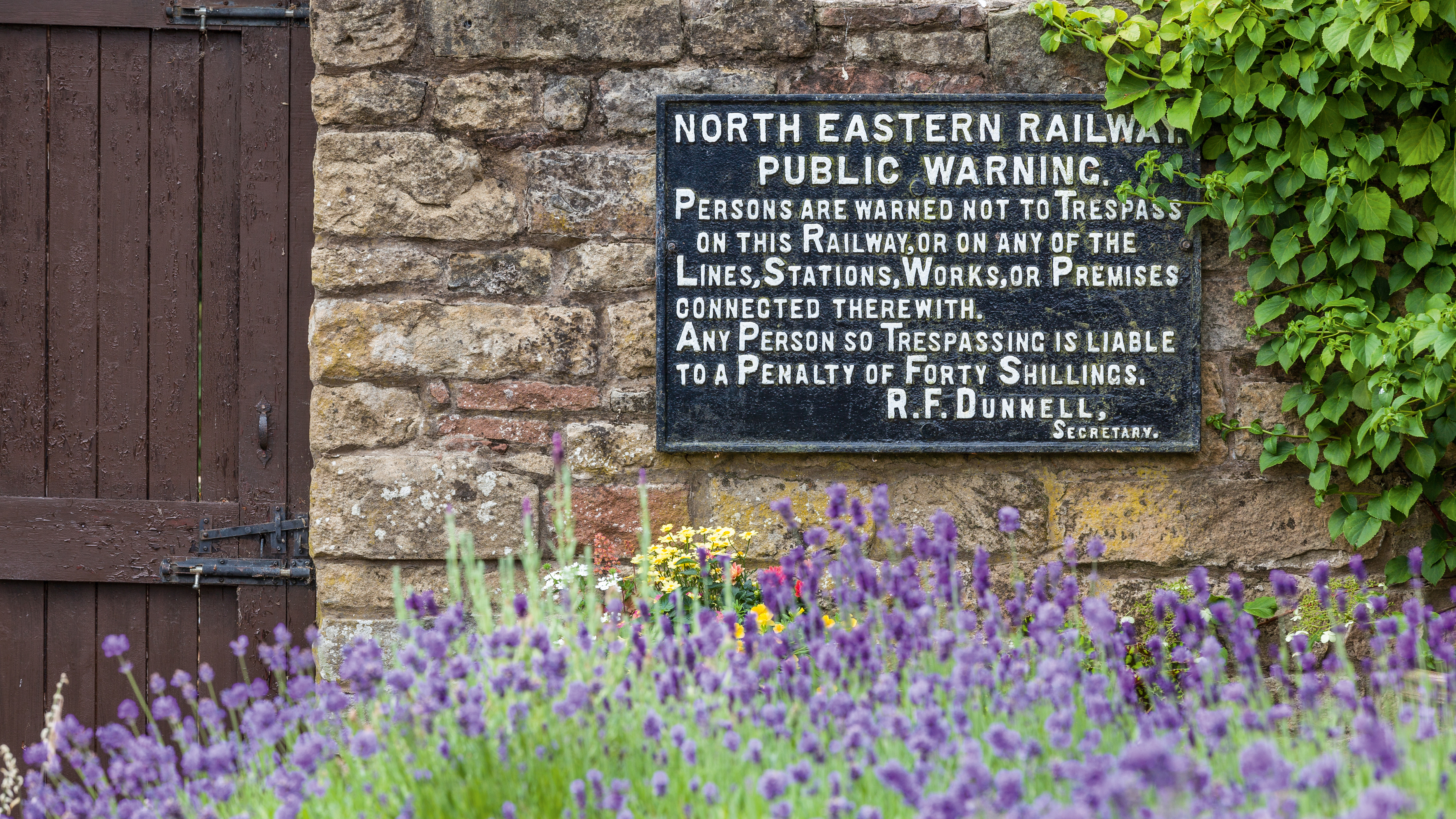
Lavender beds in front of an old stone wall with an original railway sign
‘The main access to the house is over the railway footbridge, so everything has to be manually carried from the car to the garden. There used to be a sleeper crossing on the railway line so we could use a wheelbarrow to bring things over, but that was eventually removed for safety reasons,’ says Mat.

The wheelbarrow once used to ferry gravel from the boot of the car and across the railway line is now out to good use as decorative planter for mini hostas in the gravel garden
The sleeper did come in handy, though, for ferrying tonnes of shingle, used to create a gravel garden and footpaths. Jude and Mat have also incorporated leftover railway paraphernalia to create features and focal points, like an old sack barrow, window lintels, stone railway sleepers, metal signs and even a lamppost.
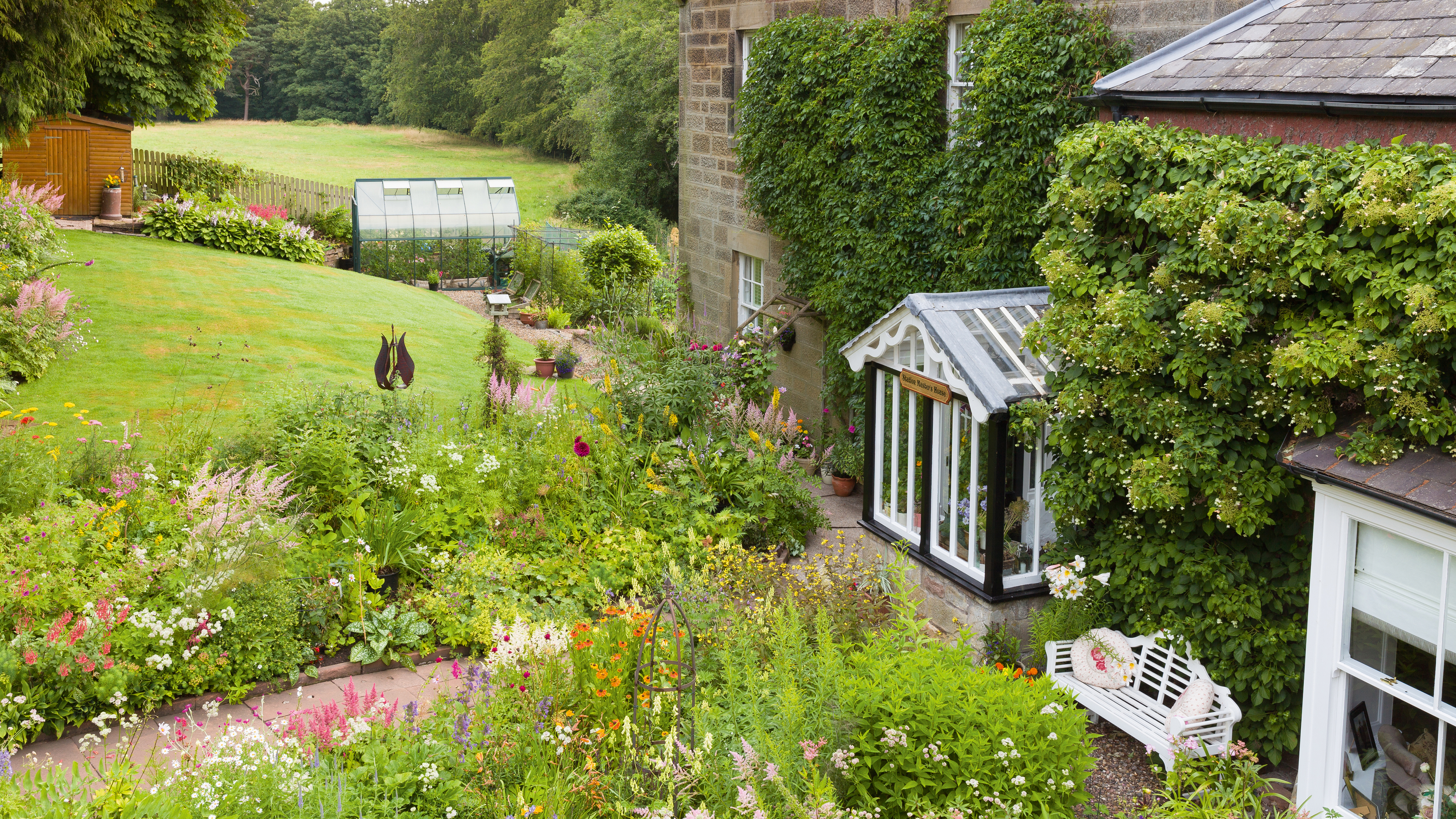
The view from the railway footbridge shows the garden at the former stationmaster's house in all its floriferous glory
In recent years, the main things to be carried over the footbridge are plants – and Jude is always on the lookout for something new.
‘Once the structural elements of the garden were in place it was a case of letting the planting evolve,’ she says. ‘I come from a farming background, so I was keen to grow lots of fruit, herbs and vegetables. We have four children and 12 grandchildren so we get through a lot! ’
Find advice on creating your own kitchen garden brimming with vegetables, fruit and herbs.
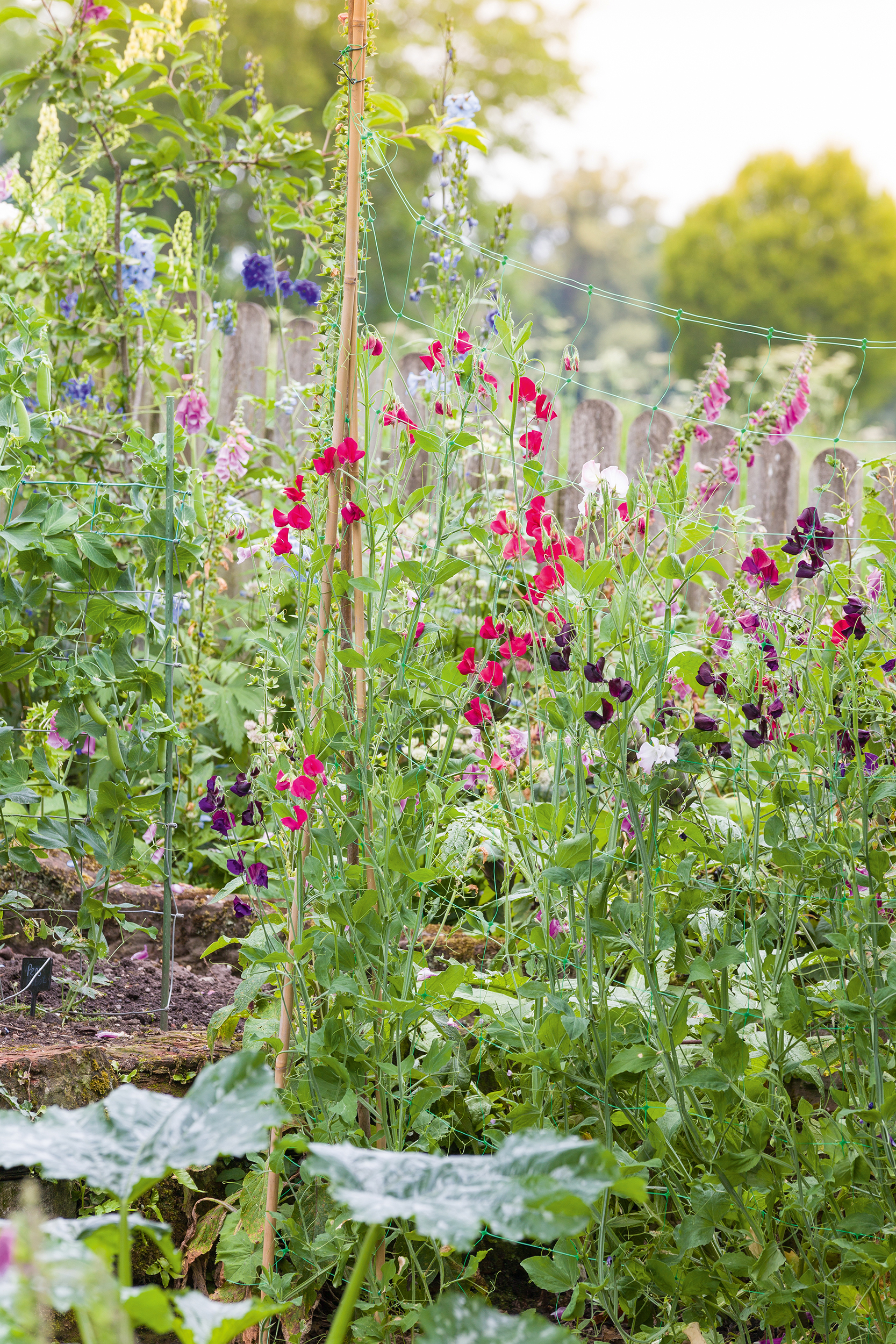
Sweet peas create a colourful boundary between the vegetable patch and next door’s garden
Jude has filled the garden with textures, shapes and colour, planting everything from lavender, phlox, and roses, to lilies, clematis and lobelia. One of her favourite plants, hostas, with their lush foliage, variegated colours and beautiful leaf shapes, look spectacular grouped together in pots on a patio, or planted as a border display.
Find advice on how to create successful displays with container planting.
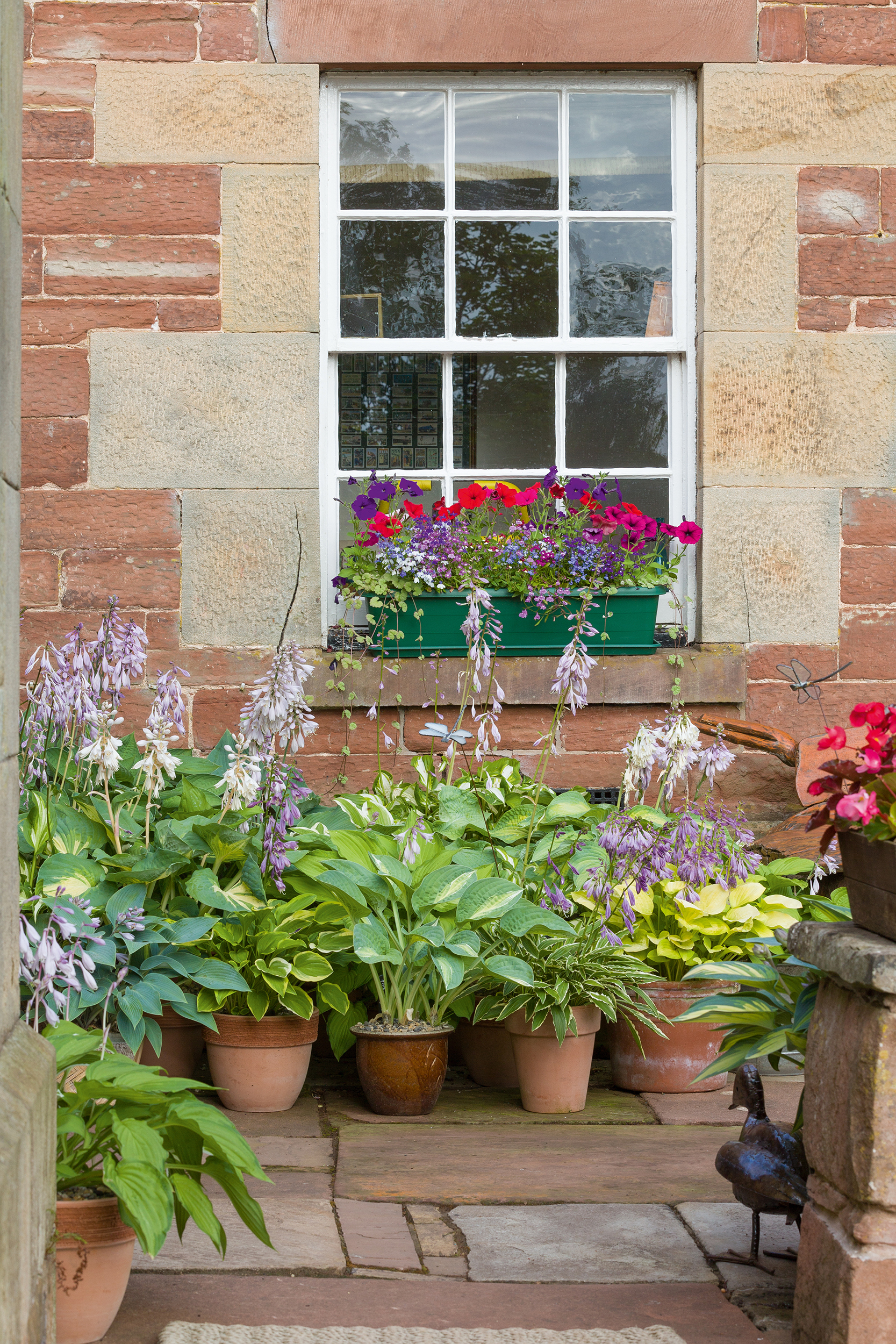
Hostas of all shapes and sizes create a little vignette nestled in a shady spot on the patio
Succulents have also been included in the gravel garden and decorative pots around the garden walls, while the cottage garden flowers are constantly being replenished and added to, creating a riot of colour around the front door of the stationmaster’s house.
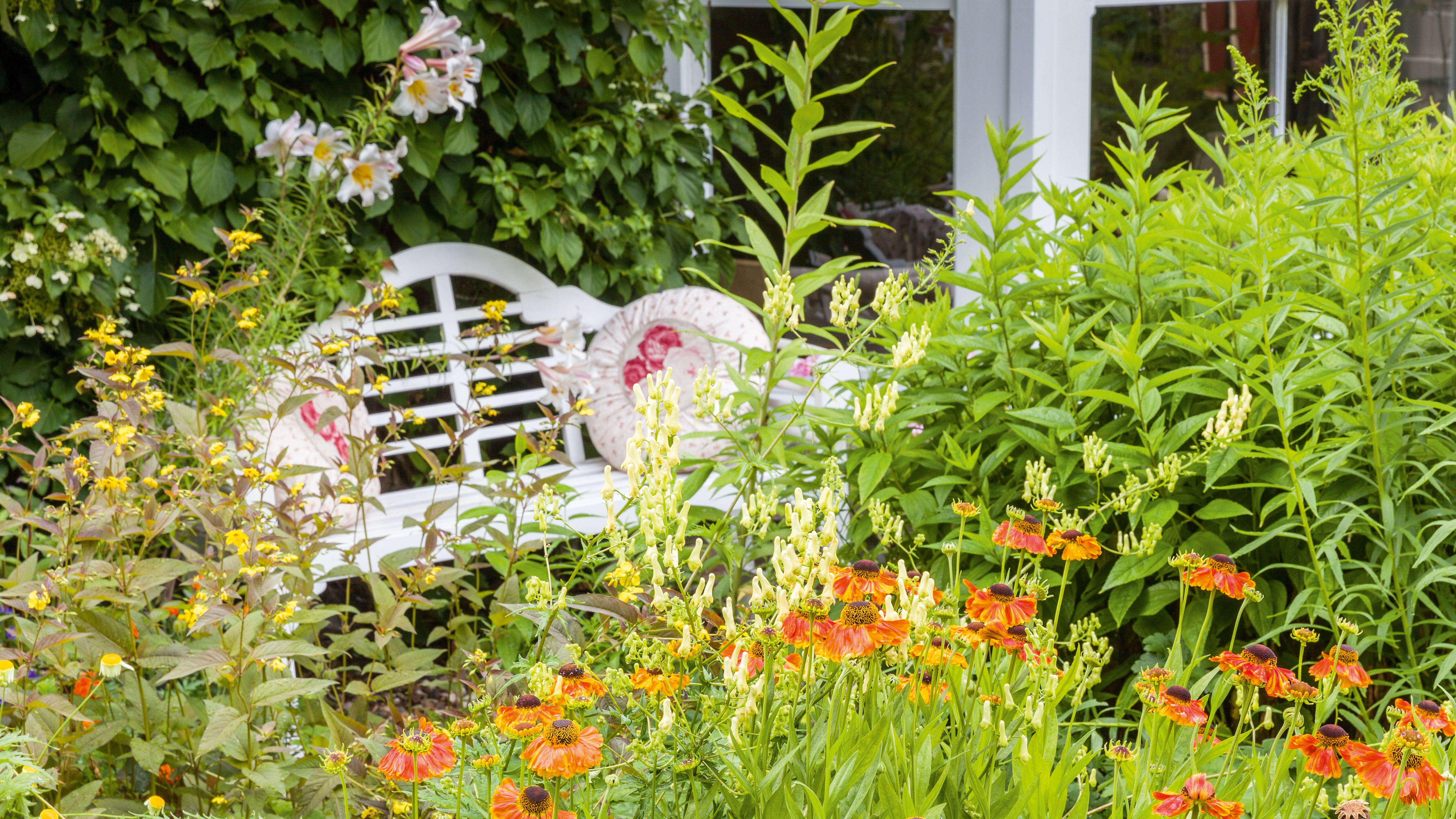
Each part of the garden is treated like an outdoor room with pretty wooden benches tucked among the flowers, as here hidden behind a sea of Helenium Sahin’s Early Flower
Jude is particularly fond of ferns, which are ideal for north-east facing gardens, and cottage garden flowers, which bring summer-long colour into the beds and borders.

The path of stone railway sleepers is flanked by a riot of pretty cottage garden plants, leading up to the Victorian porch. The dark pink plant is 'phygelius'
‘It was a huge learning curve,’ says Jude. ‘I’m still learning. In the early days I would plant things that were too big for the position and end up moving them, or I’d plant something that overpowered the plants next to it; but gradually you learn how things work together and when they will be at their best.’
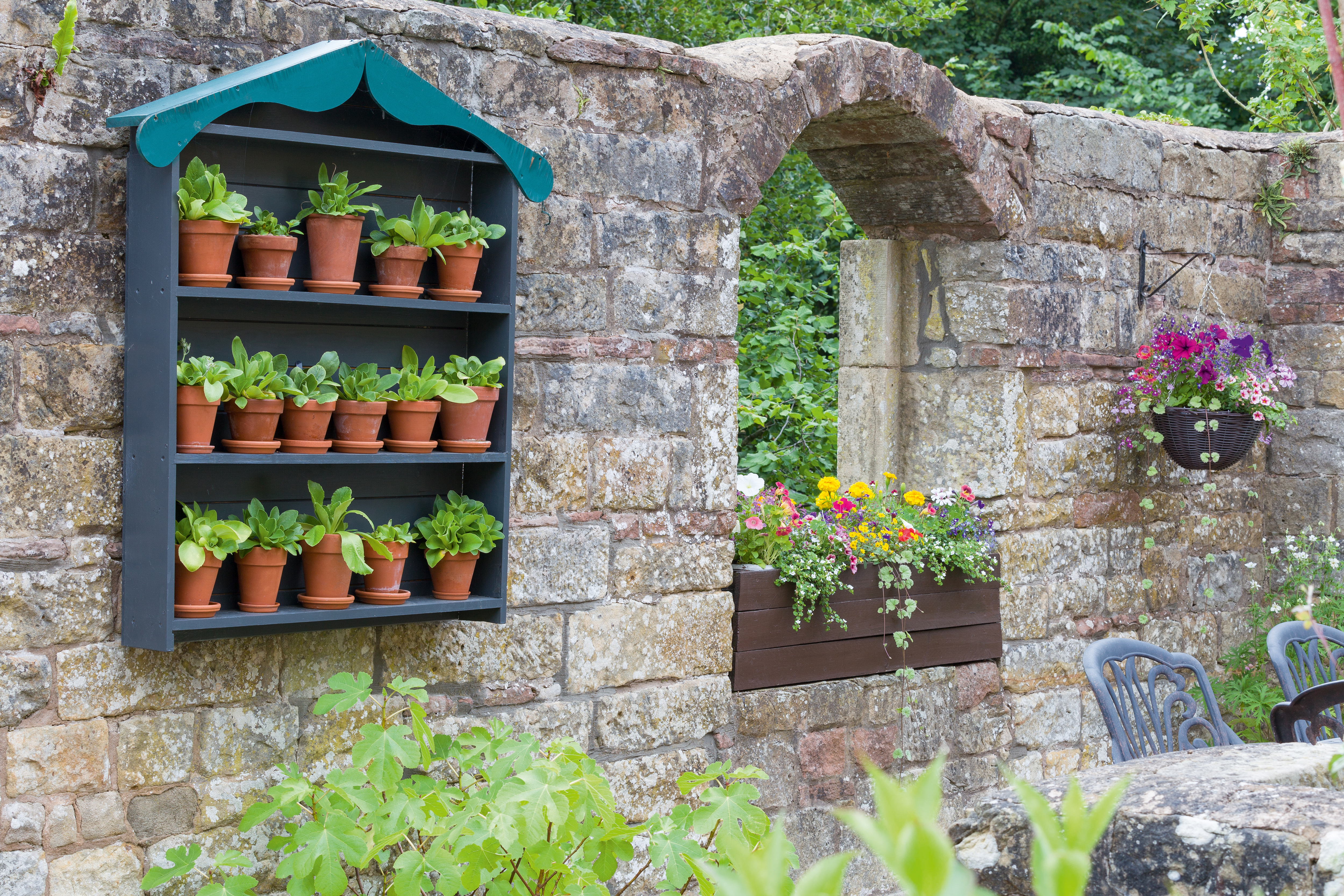
The auricula theatre was made by a friend and filled with pots full of young plants inspired by the largest of the group. This is a traditional way of displaying auricula plants as the cover protects the dusty bloom on the leaves
The garden also includes a small orchard of pear and apple trees, and a chicken run – created and cared for by Mat. As a result, it comprises a series of ‘rooms’, each with their own character and purpose, all of them leading down to a beech hedge that divides the garden from a deep gorge down to the River Eden.

A wooden gate separates the gravel garden from the orchard
‘We love it when people waiting for trains look into the garden and enjoy the flowers,’ says Jude. ‘A garden is for sharing and we share it every day with people travelling to and from the village.
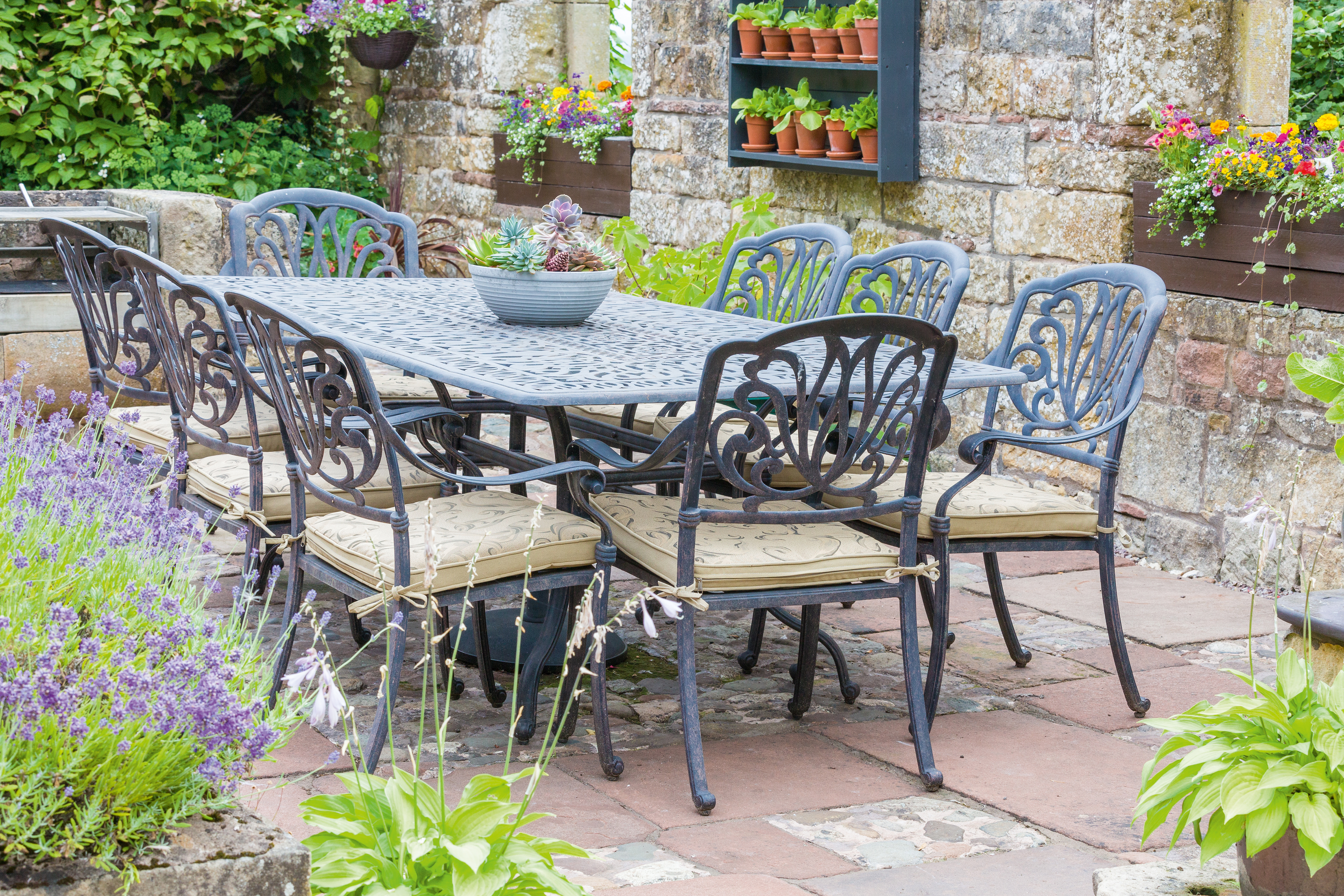
The sheltered patio, once a waiting room and toilet block, is ideally sheltered for dining al fresco and the large table comfortably seats the family when they visit
Tips for growing hostas
- Otherwise known as plantain lilies, hostas generally thrive in shade but the lighter the leaves, the more sun they can tolerate
- Plant them in rich organic soil and keep moist, watering regularly at the base to make sure the hostas don’t dry out
- Hostas are a magnet for slugs, so sprinkle an area around the base of the plants with sand or light, sharp gravel, to prevent them getting to the plants
- They are a natural weed suppressor as the roots spread, but choose a sheltered, shady spot if you are using them to create ground cover

Nasturtiums, lobelia, marigolds, geraniums and lilies create a waterfall of colour among these potted plants on the stone windowsill
MORE GARDEN INSPIRATION
Join our newsletter
Get small space home decor ideas, celeb inspiration, DIY tips and more, straight to your inbox!
-
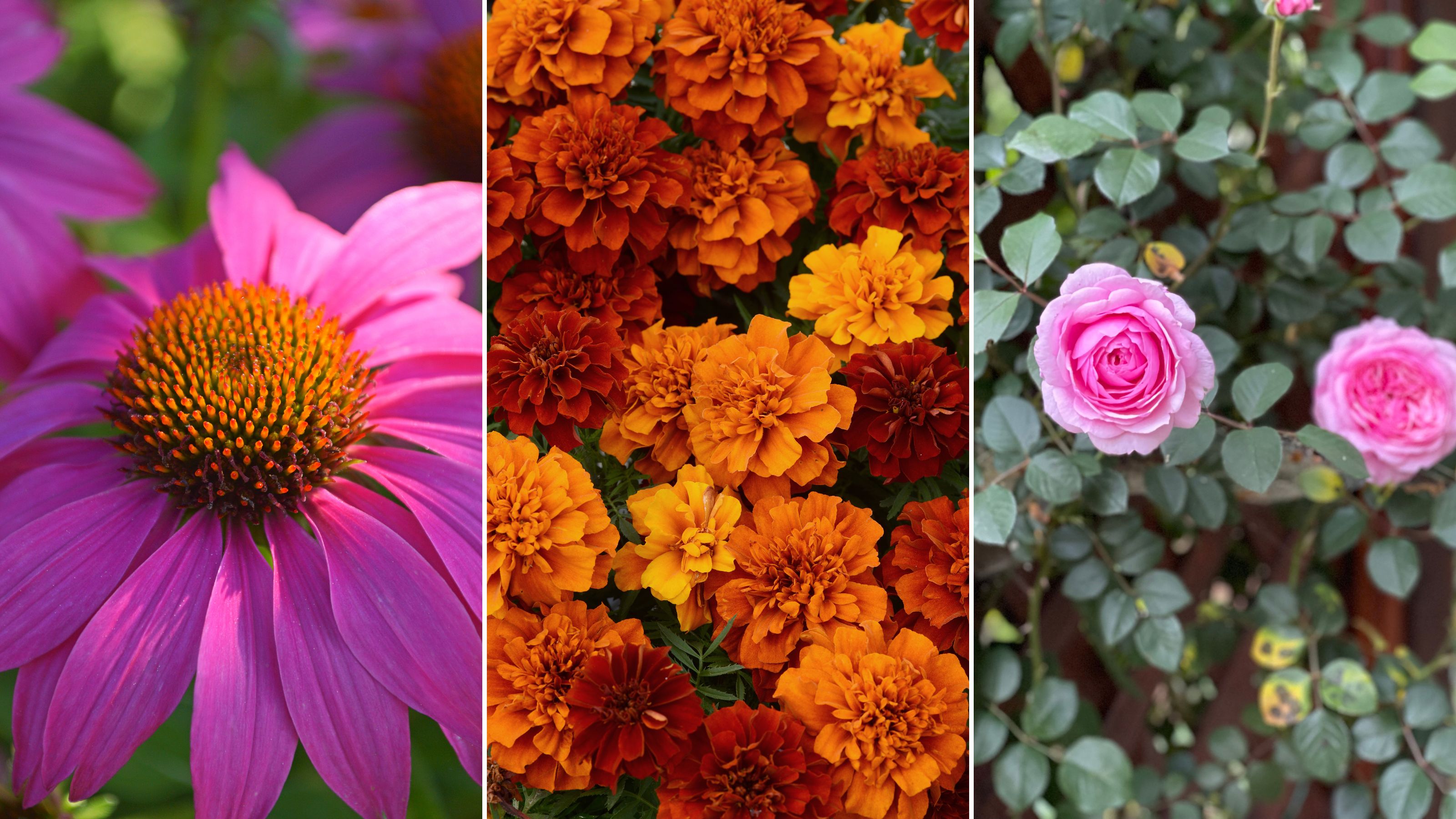 The 7 flowers to plant in August, according to gardening gurus
The 7 flowers to plant in August, according to gardening gurusKnowing what flowers to plant in August isn't always so clear-cut. But that's why we called in help from pro planters — here's what they said to pot.
By Becks Shepherd
-
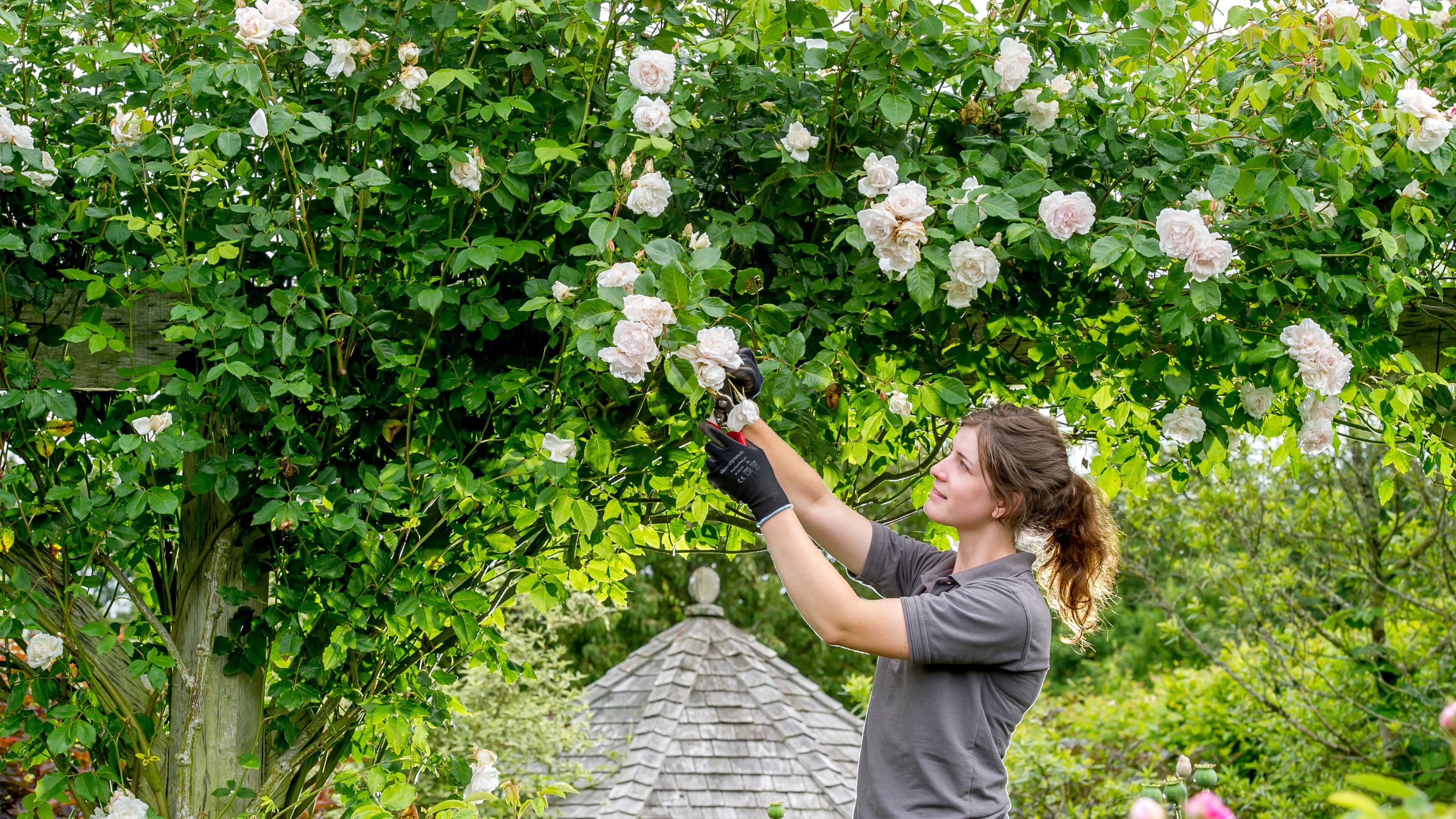 The 7 plants to prune in August — and the 2 pieces of greenery you shouldn't touch
The 7 plants to prune in August — and the 2 pieces of greenery you shouldn't touchWondering what plants to prune in August? We asked a gardening expert for their top tips plus info on what pieces of greenery to avoid pruning this month
By Becks Shepherd
-
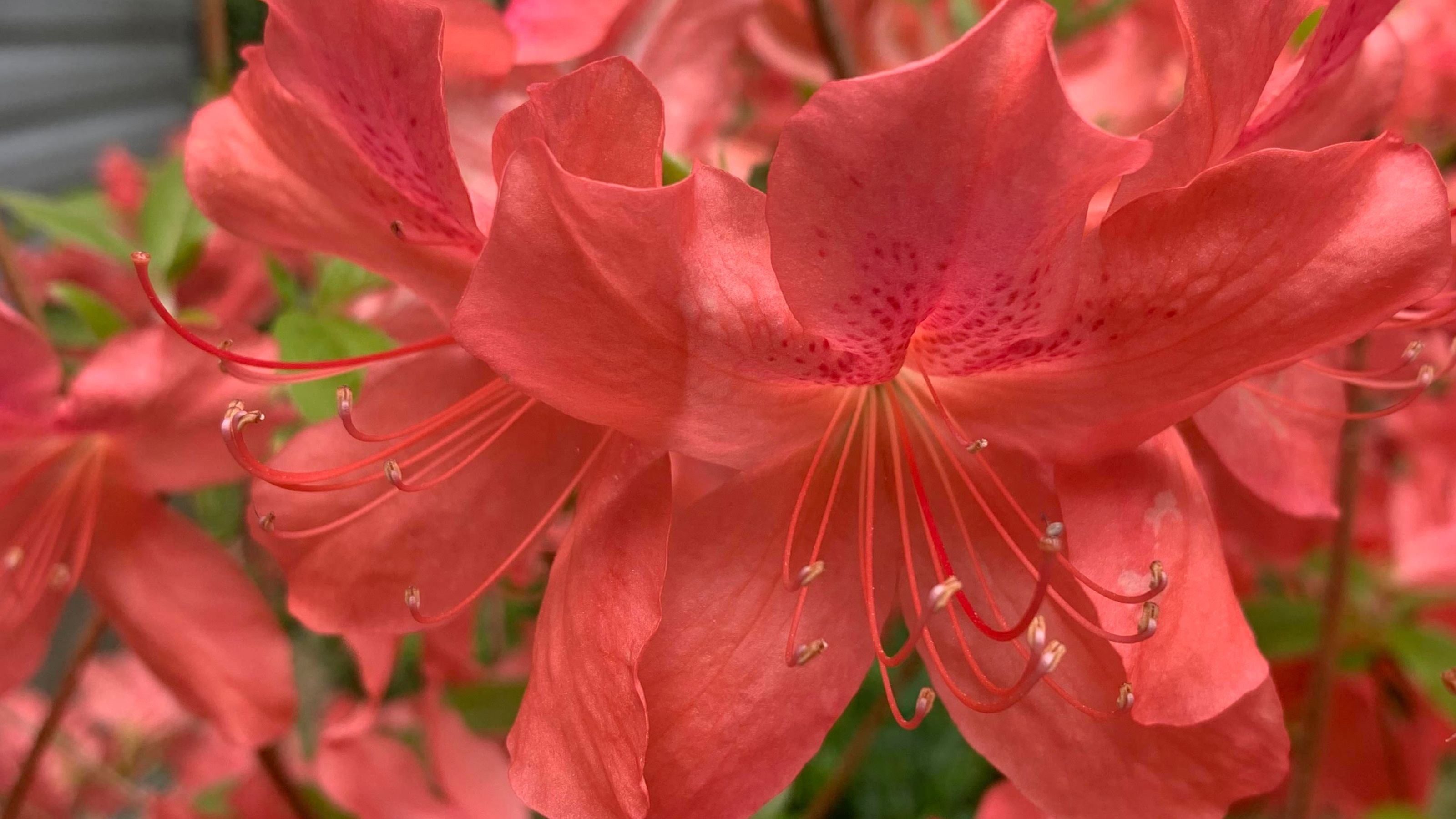 Do you need to deadhead azaleas? Top tips for pruning these flowering shrubs
Do you need to deadhead azaleas? Top tips for pruning these flowering shrubsWondering whether you need to deadhead azaleas? We asked a gardening expert for their top tips for looking after these blooms
By Becks Shepherd
-
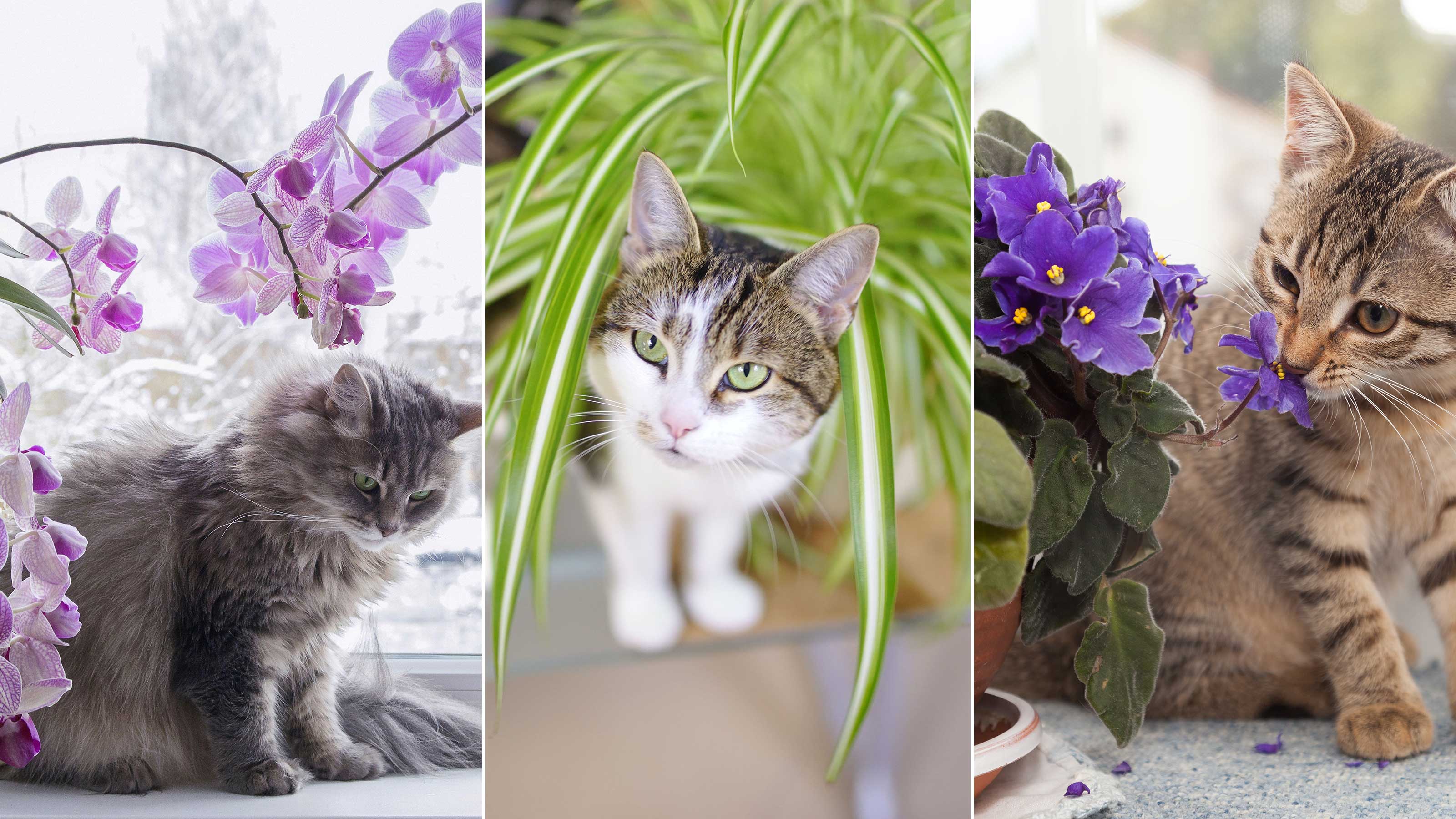 10 houseplants that are not toxic to cats — plus expert advice on keeping your pets safe
10 houseplants that are not toxic to cats — plus expert advice on keeping your pets safeKeep your four-legged companion safe by choosing these houseplants that are not toxic to cats, and learning the dangers of those that are, according to veterinary experts
By Holly Crossley
-
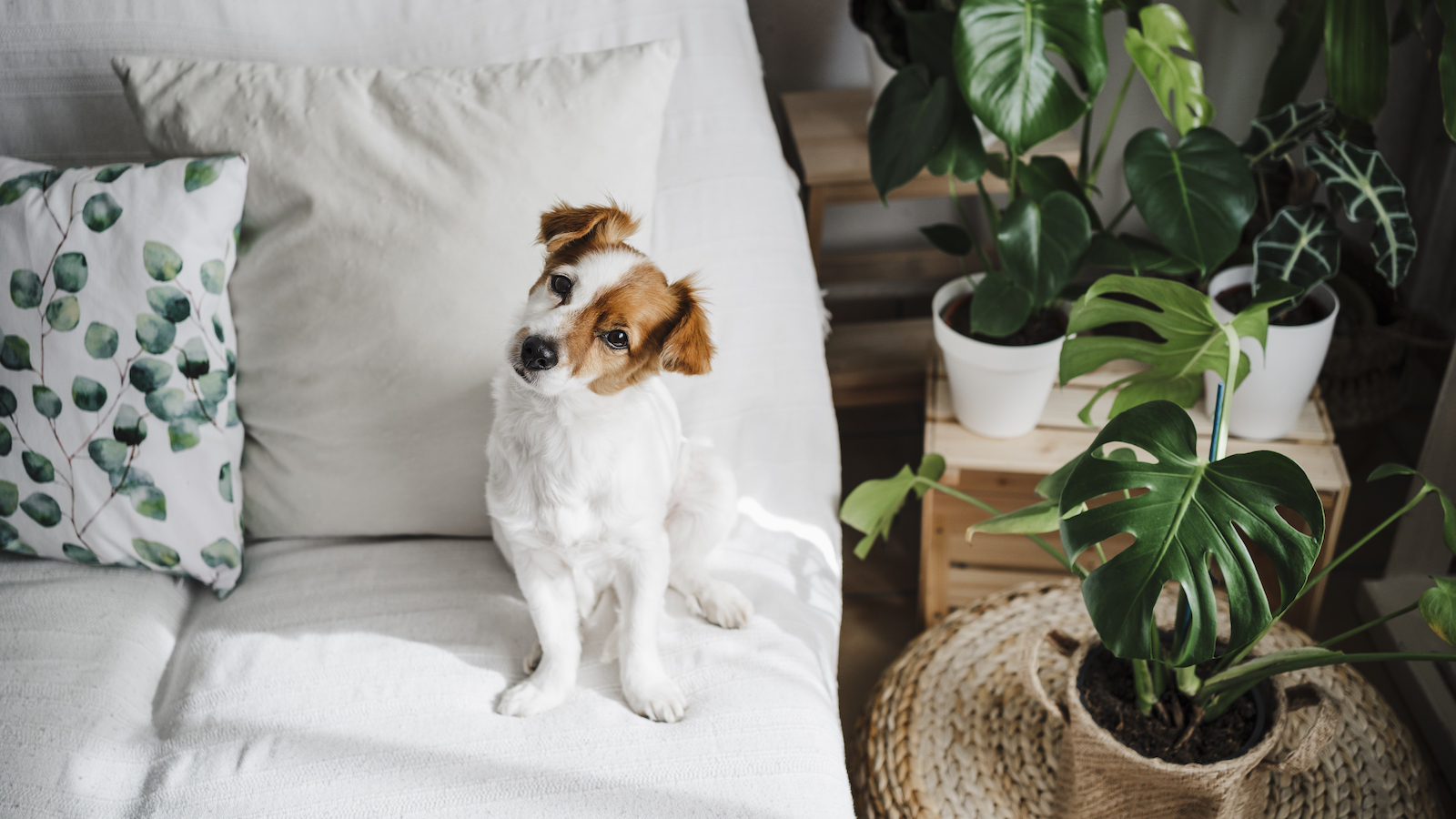 Which houseplants are toxic to dogs? Vet experts pinpoint problem plants and solutions
Which houseplants are toxic to dogs? Vet experts pinpoint problem plants and solutionsWondering Which houseplants are toxic to dogs? We spoke to vets about the problematic leafy greens, what they trigger in dogs, and how to find a solution
By Danielle Valente
-
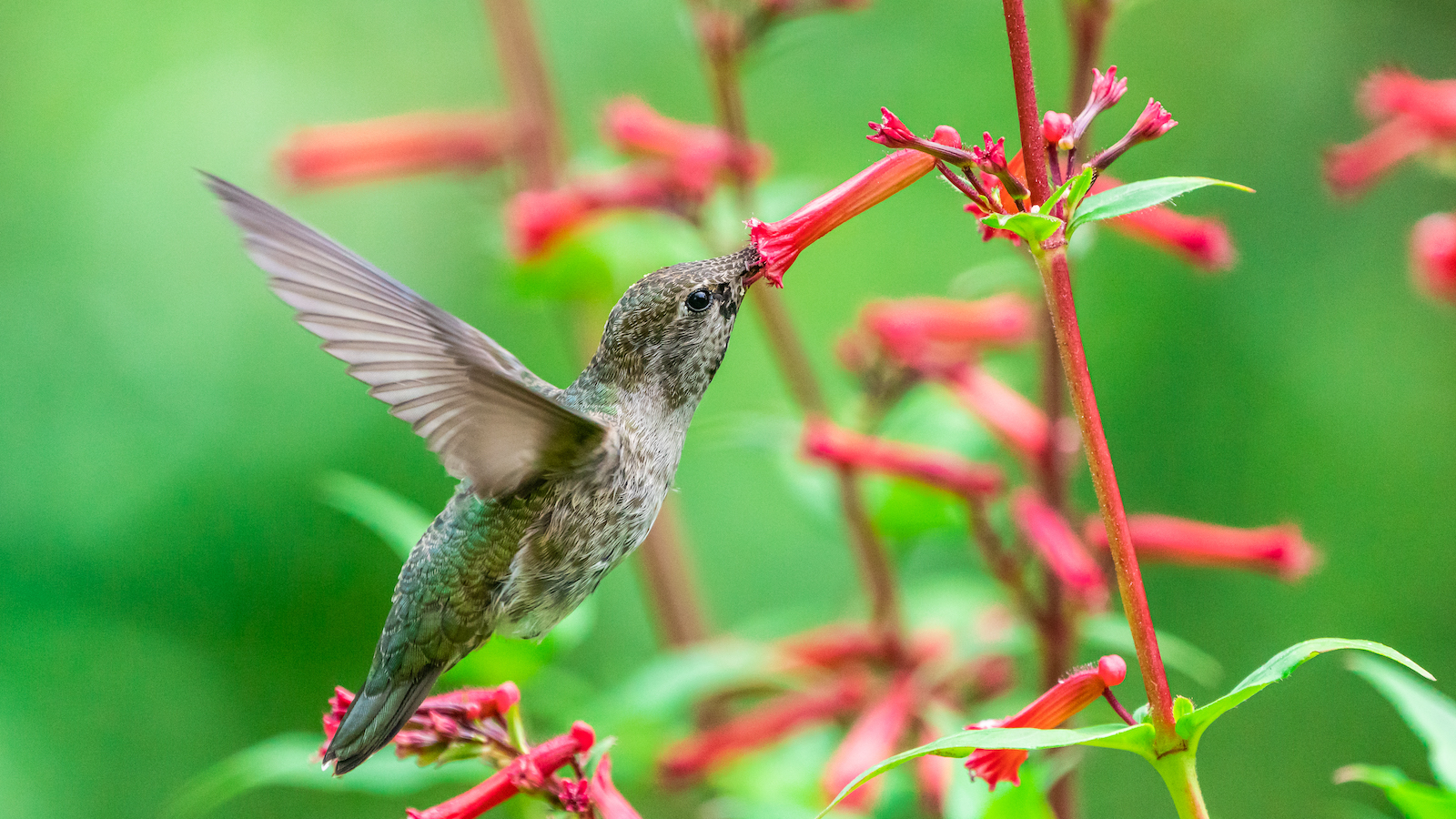 How to attract hummingbirds to your backyard, according to ornithologists
How to attract hummingbirds to your backyard, according to ornithologistsTrying to figure out How to attract hummingbirds to your backyard? These ornithologist-backed tips will guarantee you visitors in no time
By Danielle Valente
-
 Does hydrangea bloom every year? Pros spill the dirt on the "garden favorite" and when to expect it
Does hydrangea bloom every year? Pros spill the dirt on the "garden favorite" and when to expect itWondering, "Does hydrangea bloom every year"? We asked the pros all about the garden favorite and how often to expect them — here's the dirt.
By Danielle Valente
-
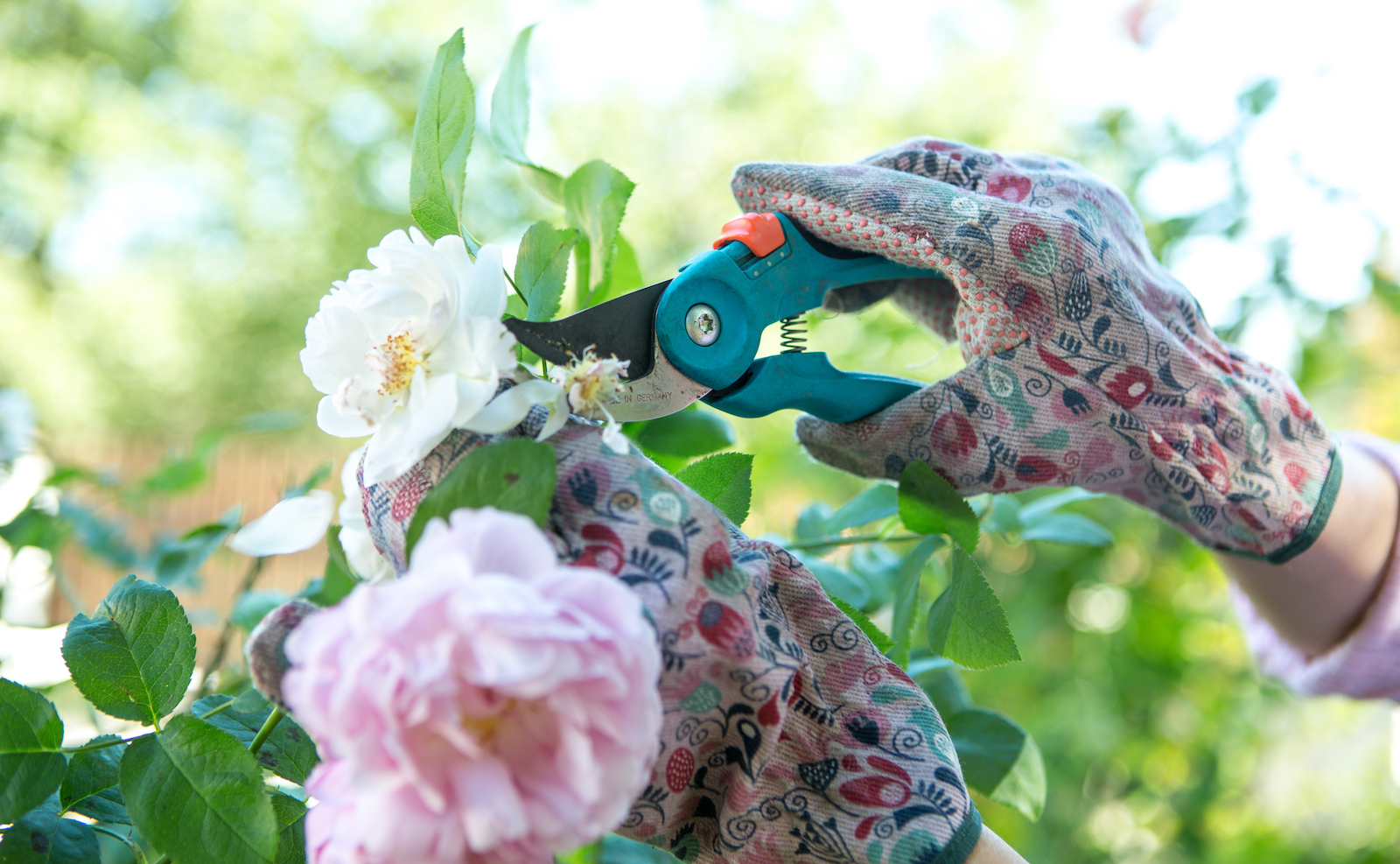 What to prune in spring — experts reveal how to get a lush, full garden
What to prune in spring — experts reveal how to get a lush, full gardenCurious what to prune in spring? We asked gardening experts for their top tips for a luscious, thriving garden
By Danielle Valente